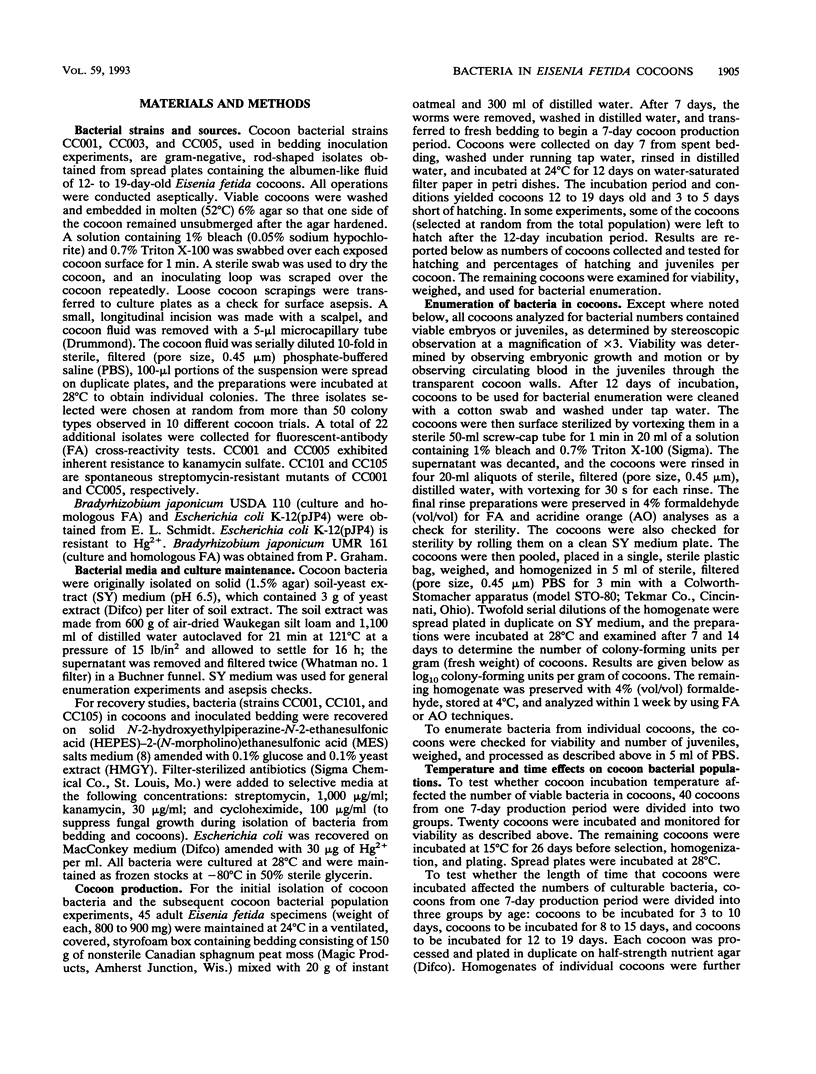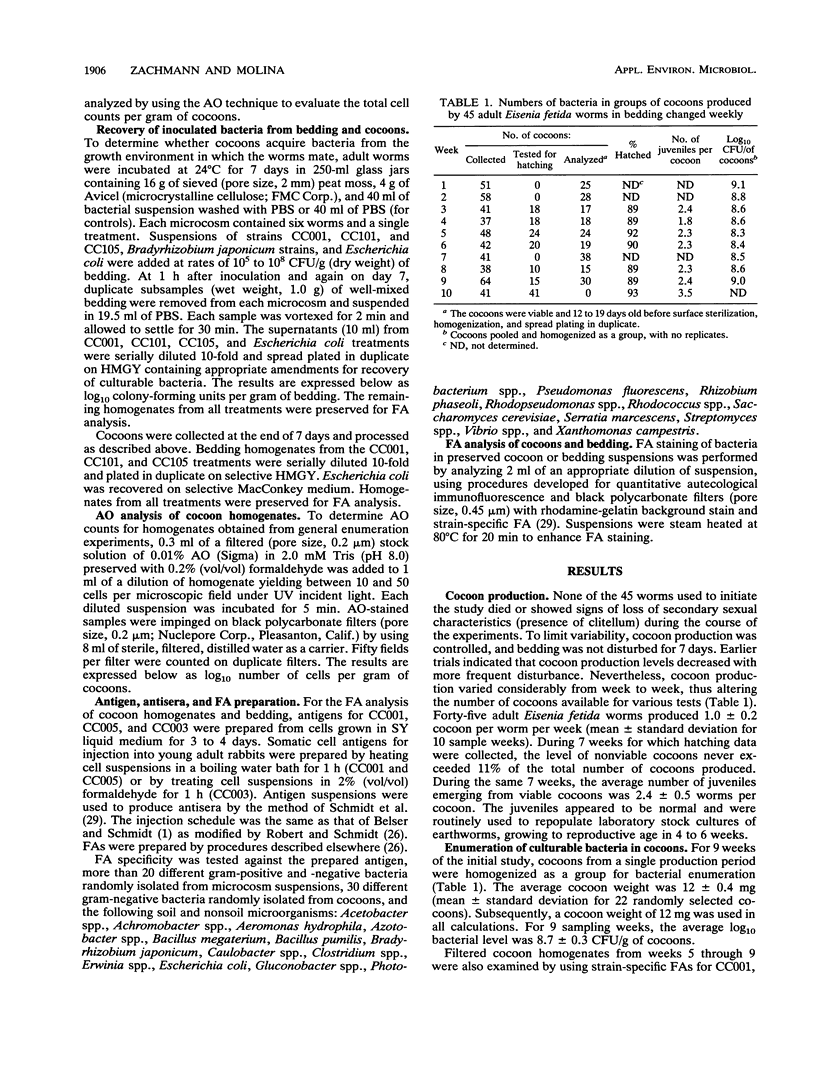Abstract
Viable bacteria were found to coexist with developing embryos in egg capsules (cocoons) of the earthworm Eisenia fetida. Earthworms were reared under standardized conditions, and bacterial densities were measured in distinct batches of cocoons collected weekly for 10 weeks. Cocoons weighing 12 mg contained a mean viable bacterial population of approximately 108 CFU/g of cocoons. No difference was found in viable counts obtained from cocoons incubated at 15°C and cocoons incubated at 24°C. Viable bacterial numbers increased with cocoon age, while acridine orange direct counts of microbial cells were stable at approximately 109 cells per g of cocoons. Bacteria isolated from cocoons were used to develop antisera in rabbits for the production of strain-specific fluorescent antibodies. Fluorescent antibody and selective plating techniques were used to monitor populations of these bacteria in earthworm bedding and to determine whether cocoons acquire bacteria from the environment in which they are formed. Cocoon isolates were readily recovered from cocoons formed in inoculated bedding at densities of 108 CFU/g of cocoons. Bradyrhizobium japonicum USDA 110 and UMR 161 added to bedding were also recovered from cocoons, but at lower densities than cocoon isolates. Escherichia coli K-12(pJP4) inoculum was recovered from bedding but not from cocoons. The bacterial complement of Eisenia fetida cocoons is affected by inoculation of selected bacterial isolates in the worm growth environment.
Full text
PDF






Selected References
These references are in PubMed. This may not be the complete list of references from this article.
- BRUSEWITZ G. Untersuchungen über den Einfluss des Regenwurms auf Zahl, Art und Leistungen von Mikroorganismen im Boden. Arch Mikrobiol. 1959;33(1):52–82. [PubMed] [Google Scholar]
- Belser L. W., Schmidt E. L. Serological diversity within a terrestrial ammonia-oxidizing population. Appl Environ Microbiol. 1978 Oct;36(4):589–593. doi: 10.1128/aem.36.4.589-593.1978. [DOI] [PMC free article] [PubMed] [Google Scholar]
- Bottomley P. J., Maggard S. P. Determination of viability within serotypes of a soil population of Rhizobium leguminosarum bv. trifolii. Appl Environ Microbiol. 1990 Feb;56(2):533–540. doi: 10.1128/aem.56.2.533-540.1990. [DOI] [PMC free article] [PubMed] [Google Scholar]
- Cole M. A., Elkan G. H. Transmissible resistance to penicillin G, neomycin, and chloramphenicol in Rhizobium japonicum. Antimicrob Agents Chemother. 1973 Sep;4(3):248–253. doi: 10.1128/aac.4.3.248. [DOI] [PMC free article] [PubMed] [Google Scholar]
- Hartenstein R. Sludge decomposition and stabilization. Science. 1981 May 15;212(4496):743–749. doi: 10.1126/science.212.4496.743. [DOI] [PubMed] [Google Scholar]
- KHAMBATA S. R., BHAT J. V. A contribution to the study of the intestinal microflora of Indian earthworms. Arch Mikrobiol. 1957;28(1):69–80. doi: 10.1007/BF00411311. [DOI] [PubMed] [Google Scholar]
- Robert F. M., Schmidt E. L. Population Changes and Persistence of Rhizobium phaseoli in Soil and Rhizospheres. Appl Environ Microbiol. 1983 Feb;45(2):550–556. doi: 10.1128/aem.45.2.550-556.1983. [DOI] [PMC free article] [PubMed] [Google Scholar]
- Schmidt E. L., Bakole R. O., Bohlool B. B. Fluorescent-antibody approach to study of rhizobia in soil. J Bacteriol. 1968 Jun;95(6):1987–1992. doi: 10.1128/jb.95.6.1987-1992.1968. [DOI] [PMC free article] [PubMed] [Google Scholar]
- Scott D. A., Musgrave A. J. Aspects of the fine structure of symbiotes and related host tissues in nephridia of Allolobophora caliginosa typica (Annelida: Lumbricidae). J Invertebr Pathol. 1971 Jul;18(1):51–60. doi: 10.1016/0022-2011(91)90008-e. [DOI] [PubMed] [Google Scholar]
- TRACEY M. V. Cellulase and chitinase of earthworms. Nature. 1951 May 12;167(4254):776–777. doi: 10.1038/167776a0. [DOI] [PubMed] [Google Scholar]


